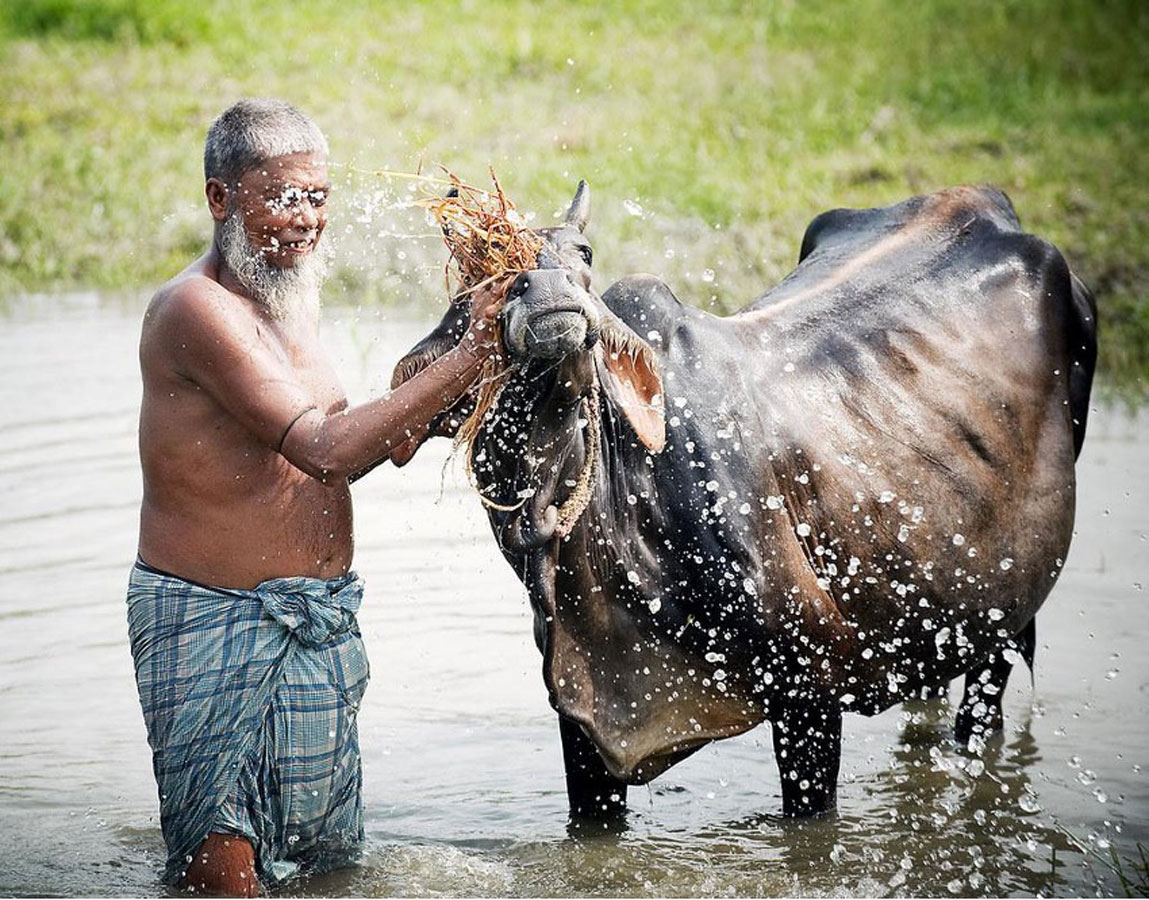Farmers in Bangladesh have a problem—they don’t know where their cows come from.
It’s a common practice among ranchers and dairy farmers in the developed world to track the lineage of generations of cattle for accurate identification of cattle breeds. Tracking breed information and genetic records also helps veterinarians know what ailments a certain cow may have a family history of.
Smallholder pastoralists and dairy farmers in developing nations don’t enjoy this kind of detailed data on their cattle herds. In fact, the vast majority of farmers in Bangladesh don’t maintain breed records at all, said Shah Mohammad Mushfiqur Rahman in a recent interview with Grow Further.
“It is ideal to keep breeding records of cattle, and that is how it becomes possible to see the pedigree of a particular cattle,” Rahman said. “This has long been in practice in developed counties, but there has been no practice of keeping breeding records in Bangladesh.”
He and his partners are now developing a high-tech tool that could empower Bangladesh’s cattle herders to do what their developed world counterparts are already doing.
“It is ideal to keep breeding records of cattle and that is how it becomes possible to see the pedigree of a particular cattle.”
It’s algorithmic
A lawyer by training, Rahman now holds the title of Director of E-Agriculture at mPower Social Enterprises Limited. He and three other agricultural innovators have applied for a Grow Further grant in support of a project that proposes developing a smartphone mobile application that can instantaneously tell a farmer the pedigree of a cow through photographs—almost like facial recognition software, except for cattle. Powerful algorithms and advanced machine learning technology make all this possible, as the team explained in careful detail in their application.
In our interview, Rahman said Bangladeshi farmers don’t accurately know the breeds or breed percentages of their cattle simply because they’ve never bothered to keep records of this information traditionally. If they had, then they could optimize breeding in ways that might dramatically boost meat and milk production throughout the country. “Even on commercial farms, there is almost no practice of keeping breeding records,” he said.
Technicians trained in artificial insemination of cattle do what they can through visual reviews, he added. But the technicians’ assessments are educated guesses at best. Plans are in the works to introduce breed tracing, but he says that won’t solve the problem anytime soon.
“The Bangladesh government is undertaking programs to create a national-level database of cattle but it will take a long time to achieve that,” Rahman said. “Even if the government makes it mandatory to keep cattle breeding information in a central database, we will still have no information on the breeds of the current cattle population. That is why we need to find an alternative.”
So it’s technology to the rescue. “We aim to develop machine learning-based software that would be put into a mobile app that can be used to take images of a target cattle, and the app will tell the target cattle’s breed,” he said.
Their grant application goes into much more detail, but that’s generally how the team’s proposed smallholder agriculture technology concept would work. Farmers would download and install a special app on their smartphones or other mobile devices. With the app running, they would then simply take a picture of a cow they have questions about. Seconds later, the mobile app would tell them the cow’s breed or breed mix, for example, “75 percent Holstein Friesian plus 25 percent local breed, or 50 percent Sahiwal plus 50 percent local breed, etc.,” Rahman said.
Getting a handle on the confusion
Artificial insemination of cattle was introduced to Bangladesh relatively recently, Rahman said. The country’s farmers have subsequently embraced it enthusiastically, a little too much so. When the nation’s meat and dairy operations were dominated by only one or two breeds, tracing generations of breed data made little sense, but since the introduction of artificial insemination, the genetic markers of multiple breeds have now entered Bangladesh’s cattle population.
“That is when things have become complicated,” Rahman explained. “Since there are new foreign breeds introduced into the country’s cattle population, now a significant portion of the cattle population is cross-bred.”
Rahman and his colleagues believe their invention will bring some clarity to the chaos and help rationalize breeding and artificial insemination decisions moving forward. Over time, the result should be milk cows that produce more milk and heifers that produce more meat, instead of mixed-breed cattle that perform relatively poorly on both counts.
“When a breed known for meat is cross-bred with a breed known for milk, obviously the results will not be good,” Rahman said. “We already have developed those algorithms. These algorithms will recommend to users one or more optimum options for artificial insemination.”
— Grow Further
Photo credit: A farmer washes his cow in a stream in Bulta, Bangladesh. UN Photo/Kibae Park.




